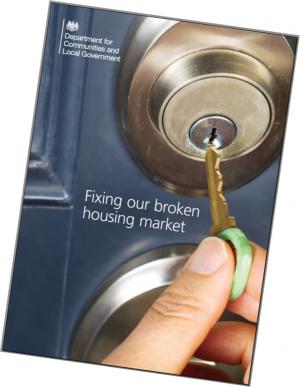



The Housing White Paper will be the subject of extensive comment in the housing press and national newspapers and this is not the place for a comprehensive treatment. Probably, the consensus amongst housing and planning professionals will be that the proposals outlined in the White Paper lack bite and will therefore have no significant impact on the housing market.
Accepting that the housing market clearly is broken, and that anything that increases supply will be valuable, there would have been an opportunity to do more about empty homes on the 'no stone unturned' principle. But the government is apparently happy to rest on its laurels, with the number of long-term empties having fallen to a record low.
We can be grateful that the white paper does have a section on empty homes, which reads as follows:
Empty homes
4.41 We will also continue to support local authorities to encourage efficient use of our existing stock, making best use of homes that are long-term empty. Local authorities have powers and incentives to tackle empty homes. Through the New Homes Bonus they earn the same financial reward for bringing an empty home back into use as building a new one. They also have flexibility to impose a council tax premium of up to 50% (on top of the council tax bill), on properties that have been empty and substantially unfurnished for more than two years. Great progress has been made in recent years and the number of empty homes stands at its lowest since records began. At May 2010 over 300,000 homes in England had been standing empty for longer than 6 months. As of October 2015 the number of longterm empty properties had fallen to 204,000.[p.63] This translates into the following proposal in the Executive Summary:
4.41 We will also continue to support local authorities to encourage efficient use of our existing stock, making best use of homes that are long-term empty. Local authorities have powers and incentives to tackle empty homes. Through the New Homes Bonus they earn the same financial reward for bringing an empty home back into use as building a new one. They also have flexibility to impose a council tax premium of up to 50% (on top of the council tax bill), on properties that have been empty and substantially unfurnished for more than two years. Great progress has been made in recent years and the number of empty homes stands at its lowest since records began. At May 2010 over 300,000 homes in England had been standing empty for longer than 6 months. As of October 2015 the number of longterm empty properties had fallen to 204,000.[p.63] This translates into the following proposal in the Executive Summary:
- Improving neighbourhoods by continuing to crack down on empty homes, and supporting areas most affected by second homes; [p.19]
